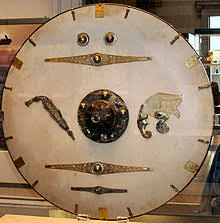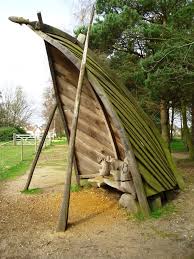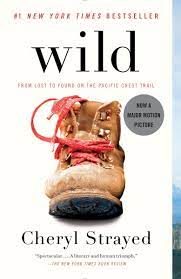Sutton Hoo is a 245 acre National Trust site in Suffolk, UK. This is the site of one of the largest archaeological finds in British history and the subject of the film, The Dig. The area of one of outstanding beauty and has hiking trails for all levels of fitness. Cotopaxi is am environmentally conscientious manufacturer of backpacks and active outerwear.
THE BEGINNING
When I was a younger shopaholic, I focused on shoes. They were very beautiful, and very sexy and I wanted a lot of them. After developing an agonising case of plantar fasciitis, I abandoned my lust for shoes and started to covet handbags instead. I wanted a lot of them. Some for function (tote bags, large enough for a laptop and a folder full of important looking papers). Some for purpose (cross-body 'washable and large enough for a phone and some poo-bags bag phase). When I became an artist, I focused on the craftsmanship of the bag (clutches). When I became a writer I revisited my first love, tote bags (laptop, papers). When I have an itch, I clearly need to scratch.
While I was first writing this travel blog, I bought aviation-inspired overnight bags. I envisioned a new me, gliding through airports on a carpet of golden sprinkles, straight back, flat stomach, perfectly bouncy hair, a few inches taller and definitely ten pounds lighter. In my vision, an overnight bag was all I needed because expert travellers can pack in this way. It nestled, elegantly and weightlessly, in the crook of my slender arm. My shopaholic mind told me that the perfect bag would give me all those things. My mind is a liar.
After misjudging the distance between gates at Dubai International Airport resulted in a marathon race from one terminal to the next while carrying an extendable Longchamp overnight bag so overpacked with impetuously purchased linen sheets it could not be nestled in the overhead bin, let alone in the crook of one's arm, I knew I had to rethink my packing strategy. I switched from the chic, fabulous and overweight overnight bags to a, ahem, backpack.
Pack on back, I Embraced a 'Live the Life' motto. I stopped running through airports and started walking pilgrimages. That bag took me through the Camino de Santiago and Croagh Patrick, hikes up Lions Head and Mt. Thorbjorn, the Appalachian Trail and the perambulation of Great Britain's hiking trails.
...And then there was Covid-19 and there ceased to be any point at all in fantasising about travel. The only thing to do was walk the dog, and that is all I did for 18 months. I didn't want to go on dog walks any more. Even my dog didn't want to go on dog walks any more.

THE INSPIRATION
Still, the time came when I felt the need to get into the wild and clear some cobwebs out of my noggin. When finally permitted to extend our travel radius, I met a friend for a quick forest walk in Wiltshire. My swift-thinking inner-bitch noticed several things about her. My friend had quaffed, rootless hair. Hate that. And she hadn't gained weight, and might even be fitter. Hate that even more. She was of the tribe that, instead of watching Netflix all day, committed to Veganism and bought a Peloton. Pfff! I didn't lose any weight over lockdown, but SHE had lost her sense of style! On her feet were bright blue Hoka Tennine Goretex walking boots, and slithering down her spine was the most unusual backpack.
I needed to know why she, such a stylish (and thin) woman, had chosen such a colourful (and by colourful I meant primary school primary colours) backpack. I asked if the bag had been fastened from the technicolored coat Joseph no longer needed, as theatre closures had made him redundant. She had also lost her sense of humour. I was then schooled on corporate responsibility and the delights of a Cotopaxi backpack. Right there on a Wiltshire hiking trail.
Corporate responsibility is traditionally broken into 4 categories: environmental, philanthropical, ethical and economic.
Cotopaxi (pronounced kōtōpä´ksē) is an active sportswear company named after an active volcano in the Ecuadorian region of the Andes. The volcano is sacred to indigenous Andean communities and an important part of their culture.

Founded by Davis Smith, Cotopaxi’s company motto is: Do Good. It is a certified B Corporation, meaning they put 1% of all revenue toward addressing poverty and supporting community development. Through their grant program, they promote organisations dedicated to improving the human condition. To date, the Cotopaxi Foundation has awarded 42 grants in six focus countries.

The colour combination designs are a result of a pledge made in 2020 to increase the use of non-virgin materials to 100% by 2022. They produce the bags from remnants, or left-over fabric from other companies large production runs. This keeps off-cut fabrics out of landfills and reduces waste. Cotopaxi also seeks to eliminate single-use plastics.
With the help of Climate Neutral, a nonprofit organisation that assists brands in measuring their carbon footprint, the CarbonFund and the BEF, the company is offsetting production carbon emissions and working toward a carbon-neutral footprint.
Being carbon-neutral means having a balance between emitting carbon into and absorbing carbon from the atmosphere. Carbon dioxide is the most important greenhouse gas released by humans and is threatening to the environment.
Believing in science and loving polar bears as I do, how could I NOT buy a Cotopaxi backpack?! Mine is the Batac 16 litre Del Dia. Made of very lightweight nylon fabric, it has an internal sleeve divider & hanging pocket and a front easy-access zip pocket. It also has two mesh side-pockets, ultra-light mesh shoulder straps, an adjustable sternum strap.
The rucksack is unstructured and can be rolled up and packed into a bigger bag. Because it is made from remnant material, you can't always be certain what you are going to get if you order online. Consider this a plus, as no two bags are alike, and you will be a true individual! The stars aligned for me and my Del Dia, for mine is a conventional black and navy with a hint of colour.
So now that I had my tasteful, subtly coloured Cotopaxi backpack, all I needed was somewhere to go. I dusted off my copy of 100 Outstanding British Walks, read The Salt Path by Raynor Winn, and set upon scheduling my life as a rambler.
A rambler is one who proceeds without a specific goal or purpose. In Britain, it means walking around in the country.
THE WALK

Bag on back, beige walking boots on feet, I, with daughter Emily, set off on my first hike in a long while. Sutton Hoo has been on my UK to-do list since watching the film The Dig early in lockdown 2021. The film features Carey Mulligan and Ralph Fiennes and tells the story of the widowed landowner, circa 1939, Edith Pretty, and Basil Brown, the excavator she hired to dig a mound she believed was a Viking burial site.
There are 18 burial mounds at the property. Though pillaged long ago by looters, there was a treasure of personal artefacts and cremation remains of humans and animals discovered. Mound 17 contained the body of a young man, his armour, and a horse. Most of the others contained gaming pieces, which proves that the ancients loved to party.
There are 18 burial mounds at the property. Though pillaged long ago by looters, there was a treasure of personal artefacts and cremation remains of humans and animals discovered. Mound 17 contained the body of a young man, his armour and a horse. Most of the others contained gaming pieces which proves that the ancients loved to party.
When Edith Pretty died, she gifted the ship, helmet and other artefacts from the dig to the nation. It was at the time the largest donation given and to the British Museum by a living donor. The Annie Tranmer Trust bequeathed the land and Tranmer House to the National Trust in the 1990s.
I downloaded the OS app, printed out some trail maps and planned my journey. It would take two hours to drive from my place to Suffolk. Then a two-hour hike around the property including the mounds, Tranmer House and a pop into the visitor centre, then two hours back through London. A perfect day. In actuality, it took two hours to get out of London, then a further two hours to Sutton Hoo.
We planned to walk the Sutton Hoo Ferry Cliff Walk, but parking was outside the National Trust property, somewhere on the other side of a pig farm. We would need to move the car there, and the likelihood of me getting back in that car after a four-hour drive was very unlikely, indeed. Plus, we very much needed to 'explore' the visitors centre facilities. So, we grabbed a map of the Sutton Hoo walking paths, paid the £14 entry fee and enjoyed steaming cappuccinos from the cafè before heading off to the King's Burial Ground.
Sutton Hoo has 245 acres of National Trust woodlands and grasslands near Woodbridge in Suffolk. It lies along the banks of the tidal estuary of the River Deben, and lends its name to the small village of Sutton.
There are five signposted walking paths within the Trust grounds to choose from:

*Suffolk is full of excellent hiking paths, including a new seven-mile trail that begins at Wickham Market and explores Anglo-Saxon history from 1500 years ago. Please consult the National Trust website for details.
THE LESSONS LEARNED
Studying Cotipaxi and other companies who implement sustainable production techniques has encouraged me to be more thoughtful when purchasing. We must pay attention to the supply chains, environmental responsibility and the human rights records of the companies we buy from. Granted, impulse-buying is easier and a heck of a lot more fun. But if we purchase conscientiously, we can go along way toward advancing against global catastrophe.

Furthermore, always remember that it takes two hours to get out of London from pretty much every direction. Never be fooled you can get anywhere any quicker than three.
Finally, when planning a transformative hike, use better inspiration than a Netflix film. There are great books available covering the power of a walk. Some titles to choose from are: Wild: From Lost to Found on the Pacific Crest Trail, from Cheryl Strayed, Clear Waters Rising by Nicolas Crane, To Shake the Sleeping Self by Jedediah Jenkins, Wanderers: A History of Women Walking by Kerri Andrews and the before-mentioned The Salt Path by Raynor Winn. Shirley MacLaine's 'interesting' account of her Camino pilgrimage started me down the transformative hiking road many years ago, and Dom Jolly is just plain funny.
My research into responsible purchasing and reading about inspirational walking have reignited my desire to walk. I can't wait to pack up the bag and head out into the forest again. Turns out you can learn a lot from a backpack.
Please subscribe and share this post!
#Cotopaxi #CotopaxiBackPacks #Wiltshire #UnitedKingdom #WalkingTrailsUk #NationalTrust #NationalTrustWalkingTrails #Suffolk #SuttonHoo #AngloSaxons #BritishHistory #BritishMuseum #TheDig #EdithPretty #BasilBrown #SuttonHooHelmet #HokaTennineGoretex #CotpaxiVolcanoAndes #CherylStrayed #TheSaltPath #ToShaketheSleepingSelf #TheDownhillHikingClub #TheCamino #ClearWatersRising #WanderersAHistoryofWomenWalking #ClimateNeutral #CarbonFund #BEF #ClimateAction #SaveThePlanet #ClimateChangeImpact #100OutstandingBritishWalks





















































Comments